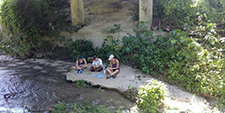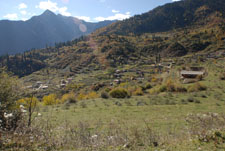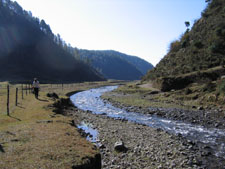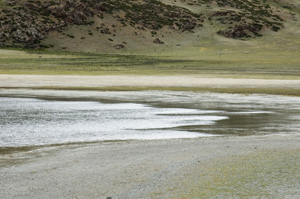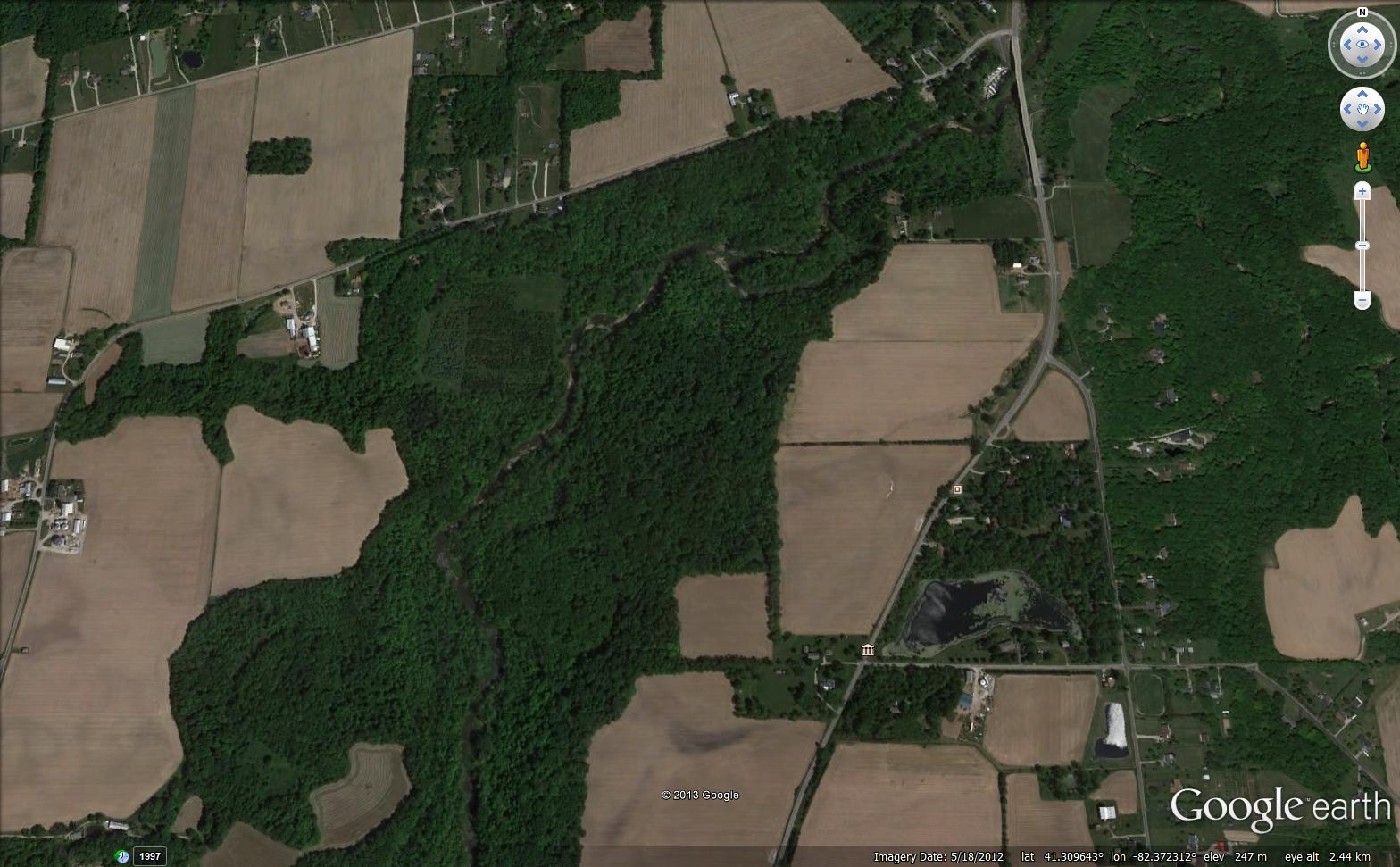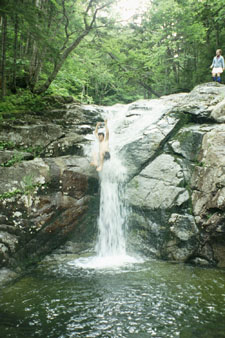Amanda Henck Schmidt
Research
Some Ongoing Research
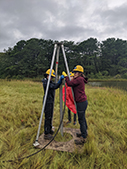 Sampling in Martha's Vineyard, summer 2021
Sampling in Martha's Vineyard, summer 2021 |
This project is in collaboration with Greg Balco (Berkeley Geochronology Center) and is trying to determine the sedimentation rate of a small dredged inlet in Martha's Vineyard in order to inform management decisions. Paige Monyak (OC'22) is completing an honors thesis analyzing the core samples we collected. She also made a video introducing the project and our field work. |
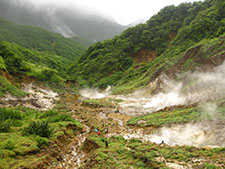 Valley of Desoluation, Dominica
Valley of Desoluation, Dominica |
The goal of this project is to understand the relationships among tropical storms, landslides, land use, and spatial and temporal patterns of erosion in Dominica. We completed field work in summer 2017 with a team of undergraduates from 15 different schools and faculty from 4 different schools. Team Geomorph (Marcus Hill (OC'19), Kira Tomenchok (Washington and Lee '18), Haley Talbot-Wendlandt (Ohio Wesleyan University '18), and Cole Jimerson (College of Wooster '18) collected sediment samples from the outlets of the 20 largest rivers on the island. This project was part of a Keck Geology Consortium Frontiers Project. Following Hurricane Maria in fall 2017, a team from Oberlin College and the Universit of Vermont returned to collect samples at the same sample sites. Melinda Quock (University of Vermont '20) completed an honors thesis on this project that is now in press at Earth Surface Processes and Landforms. Marcus Hill completed an honors project on the short-lived isotope and repeat photography data comparing before- and after-hurricane samples. Since that time, over 20 Oberlin students have worked on analysis of the short-lived isotope data from this project. Most recently, Simona Clampin (OC'23) is working on finalizing the short-lived isotope data analysis. |
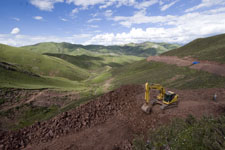 Road building on the Sichuan-Tibet Highway. Photo by John Weller.
Road building on the Sichuan-Tibet Highway. Photo by John Weller. |
Using a long-term record of Chinese sediment yield and modern isotopic techniques, I am collaborating with scientists in the Rubenstein School of Natural and Environmental Resources at the University of Vermont to understand where sediment comes from and where it goes when land use changes in mountainous areas. Over 20 Oberlin students have participated in this project to date, and work continues on the short-lived isotope parts of the project. Most recently, John Chen (OC'23) and Stephanie Macedo (OC'23) have been finalizing the data analysis on the silt and clay sized samples. Paige Monyak (OC'22) and Lauren Holmes (OC'21) presented work done while they were at Oberlin at the GSA meeting in Portland in fall 2021. Adrian Singleton (OC'16) conducted a detailed look at grain size dependencies in fall out radionuclide concentrations. He published a paper on this work in GCA. Students from other institutions have also participated in this research. Wei Renjuan (Sichuan University master's student) spent 3 months during fall 2013 visiting the lab to collect data for her master's project, which is related to one of the sample locations from field work in summer 2013. Veronica Sosa Gonzalez (University of Vermont PhD 2016) and Thomas Neilson (University of Vermont MS 2015) both participated in field work. Tom visited Oberlin college as part of this project. |
Some Past Research
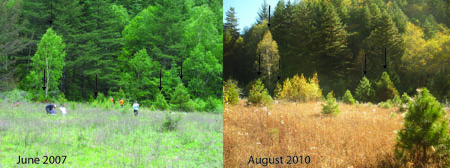 Ranwugulang Meadow in 2007 and 2010
Ranwugulang Meadow in 2007 and 2010 |
An interdisciplinary team at Oberlin College, Jiuzhaigou National Park, Sichuan University, and the University of Washington was trying to understand the effects of Jiuzhaigou's reforestation and afforestation policies on meadow habitat throughout the park. |
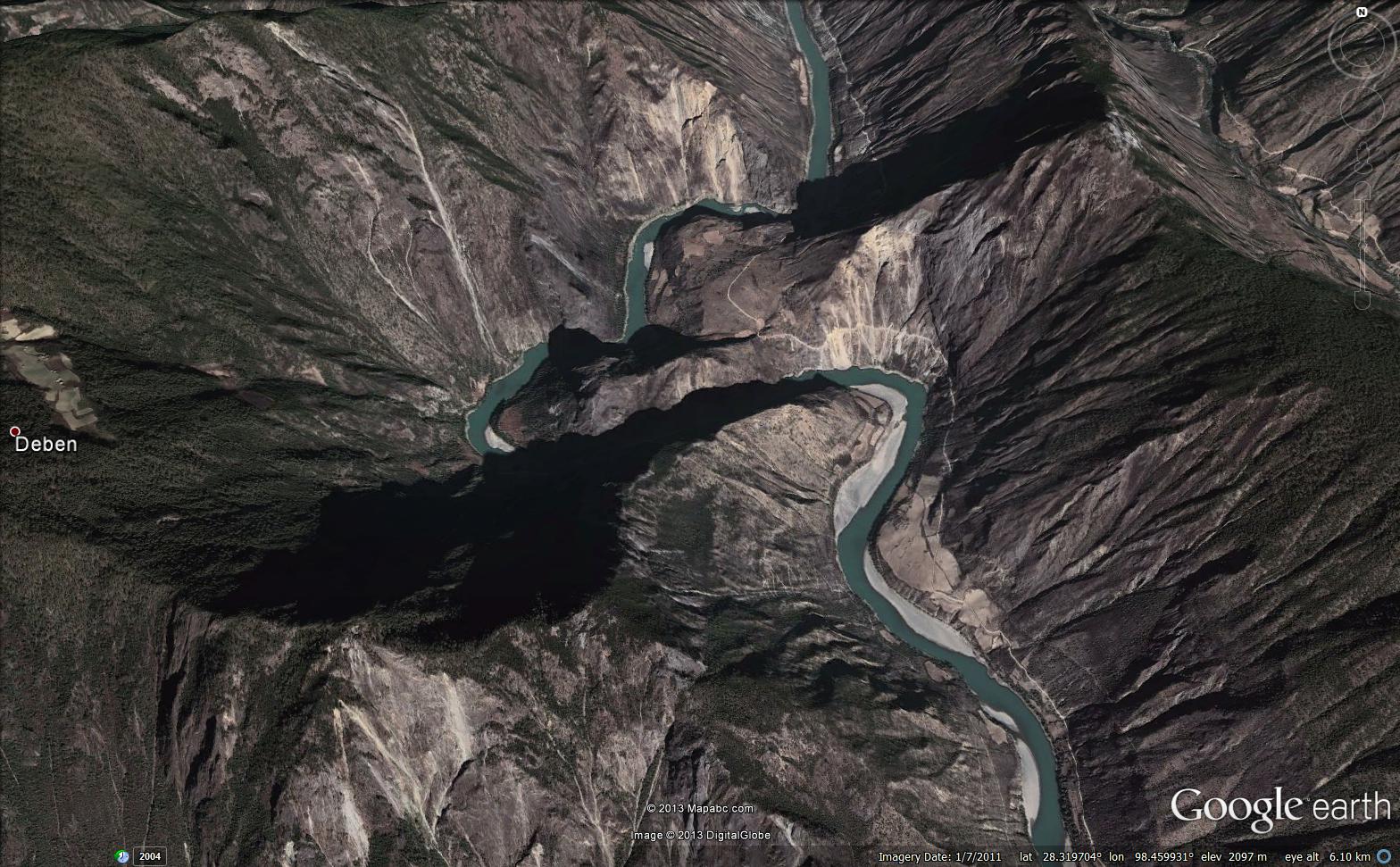 Active meander bends on the Salween River. Image from Google Earth.
Active meander bends on the Salween River. Image from Google Earth. |
For her senior thesis research, Lydia Curliss (OC'13) studied the relationship between sinuosity, as a proxy for lateral erosion, and typical geomorphic parameters thought to correlate with erosion, including climate and hillslope steepness. |
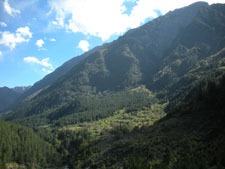 A massive landslide in Jiuzhaigou National Park
A massive landslide in Jiuzhaigou National Park |
In this project we looked at where people choose to live and how that is related to the surrounding landscape. This project was an outgrowth of the terraces project (below) and is sparked by an interest in whether people tend to live in more dangerous locations with more landslides because those areas get more sunlight. |
